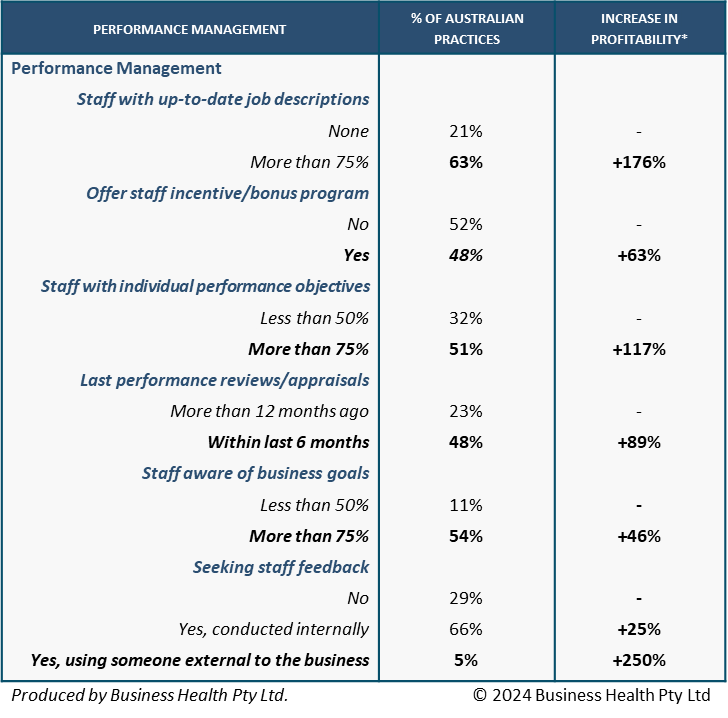You don’t need us to tell you how important your people are. So we won’t, other than to say… they represent the biggest and most strategically important investment any firm can make (their salaries comprise, on average, 44.9% of a practice’s revenue, representing 60%+ of total expenses) and with 68% of firms telling us that they’re looking to hire in the next 12 months, the battle for talent continues to rage. Finding the person who is just right for your business and keeping them productively engaged, is the challenge for every business owner.
So, when you hire someone, it’s critically important to make every step of your onboarding process a winner to ensure their introduction to your business is efficient, effective and painless – so much so that the new hire feels justified and excited in their decision to join your business.
And, for the purposes of this article it makes no difference if the job is on-site, remote or hybrid, whether the role is junior or senior, part or full time, casual or permanent, the objective and underlying principles for a successful onboarding/induction (“Introduction”) of someone new to a business are the same – adapted certainly, ignored never.
From an employee’s perspective, a successful Introduction will ensure they start their new position in an organised and professional manner. It will also ensure they feel comfortable about what is expected of them from day one through to the time they are expected to be a fully functioning team member. There is often a great deal of apprehension when starting a new job and a well-implemented Introduction can take away a lot of unnecessary stress and ensure the working relationship starts off on the right foot.
For the business, a successful Introduction allows the new hire to settle into the work and team environment quickly and happily. It also gives them the opportunity to become a productive member of the team in the quickest time possible. There will be relatively less “down time” in the education of the new employee than there would if there was no plan was in place.
And when mergers, acquisitions occur – it’s imperative that the different sets of staff are ‘introduced‘ to their new environment as quickly as possible. Schedule training to bring people up to speed with new systems, standards, policies and even the language used etc. Use teams drawn from both sides to address specific areas and to share knowledge and ideas.
Ten tips for a successful introduction process
1. Appreciate that the Introduction process begins when the person accepts the role – so a check-in call, to see how they’re feeling about starting their role with you (and how they’re notice period is working out) is prudent.
2. Keep communicating throughout the Introduction process – regular drop ins, whether they’re planned or ad hoc, conducted over the phone, through video conferencing or in-person (preferred) communication is critical in helping the new hire settle into the firm.
How are they feeling? Do they have any questions? Do they need anything clarified?
While there is no need to featherbed new team members, it is vital they feel that they appreciate that their new boss is keeping an eye out for them. Even experienced and confident individuals can feel unsure when in a new environment.
3. Involve existing staff as much as possible in the process. This will not only introduce the new employee to staff members, it will also give existing staff ownership in the induction of the new employee.
Importantly, this will also recognise the impact a new arrival could have on existing staff – perhaps by adding to their workload, or (unintentionally) threatening an existing role.
4. Be prepared for when your new person starts. Prepare a ‘welcome pack’ ready for your new employee. Think back to when you were new to a firm – what were the things that you needed to know?
If they are going to be working from the office, do they have a designated space? The right technology? An ergonomic chair? Same principle for people working externally – do they have the things they need to start straight way.
There are at least three distinct areas to address in this pack:
- Personal – the basic terms, conditions and policies of employment including the business’ approach to working hours, annual and sick leave, training and development, OH & S rules and so on.
Hopefully these have been covered in your offer letter (Terms of Engagement), which should also address your IP, probationary period, termination and client ownership.
- The business – it’s values, the type of clients it serves (and why), CVP, range of services, systems, processes and policies technology, cyber and security protocols and its various communication forums for example. An overview of the current business and longer-term strategic plans (and year to date progress to them) will also be appreciated by incoming staff.
And if your firm uses acronyms (and who doesn’t?), unique technical terms and colloquialisms – why not provide a glossary?
- Finally, technology – every business utilizes it, but very few seem to devote sufficient time and focus on it up front for new staff. If a lap-top or mobile phone is being provided, what’s the firm’s approach for use, training, access, security and cyber for example.
5. An extension of the previous point – why not appoint an internal ‘buddy’ to help the new hire navigate their new workplace. Not necessarily their manager, but someone who can share the background of the firm, provide insight and guidance as may be required.
6. Don’t schedule a heavy workload for the first few weeks. Training, education and familiarization (meeting the people with whom they’ll be working) should be the overriding objective for the first few weeks. As the saying goes – measure twice, cut once.
7. Announce their arrival – at the next team meeting, through your various communications to staff, clients and business partners alike and, if appropriate, through the business’s website and socials.
8. This might seem trivial (but it isn’t) – make sure that your new colleague actually feels welcome – can someone take them for a sandwich/coffee and a ‘how’s it going’ chat. And, if they’re employed remotely, why not Deliveroo them?
9.The above requires thought and planning and the best way to ensure nothing is overlooked and everything is accomplished is (no surprises here) through an Introduction Plan, which has been specifically personalised to the new hire. This will need to planned well in advance because it will necessarily involve other people’s time and availability. While role dependent, the Plan will most probably extend over a number of weeks, progressively reducing the pre-arranged induction content as the person settles into their job.
10.And finally, seek your new hire’s views and feedback. Why did they join you? What did they like about your selection and onboarding process? What could have been done better? Is the job/company what they expected?
While the above may seem relatively simple and intuitive, as our Future Ready IX report demonstrates, the majority of Australian practices still have some way to go towards productive management of people:

Hopefully the above will be useful for you as you seek to retain and develop your own people and, in doing so, achieve an acceptable rate of return on your people investment.

